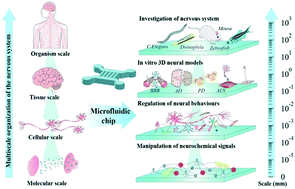Multiscale brain research on a microfluidic chip
Abstract
One major challenge in current brain research is generating an integrative understanding of the brain's functions and disorders from its multiscale neuronal architectures and connectivity. Thus, innovative neurotechnology tools are urgently required for deciphering the multiscale functional and structural organizations of the brain at hierarchical scales from the molecular to the organismal level by multiple brain research initiatives launched by the European Union, United States, Australia, Canada, China, Korea, and Japan. To meet this demand, microfluidic chips (μFCs) have rapidly evolved as a trans-scale neurotechnological toolset to enable multiscale studies of the brain due to their unique advantages in flexible microstructure design, multifunctional integration, accurate microenvironment control, and capacity for automatic sample processing. Here, we review the recent progress in applying innovative μFC-based neuro-technologies to promote multiscale brain research and uniquely focus on representative applications of μFCs to address challenges in brain research at each hierarchical level. We discuss the current trend of combinational applications of μFCs with other neuro- and biotechnologies, including optogenetics, brain organoids, and 3D bioprinting, for better multiscale brain research. In addition, we offer our insights into the existing outstanding questions at each hierarchical level of brain research that could potentially be addressed by advancing microfluidic techniques. This review will serve as a timely guide for bioengineers and neuroscientists to develop and apply μFC-based neuro-technologies for promoting basic and translational brain research.



 Please wait while we load your content...
Please wait while we load your content...